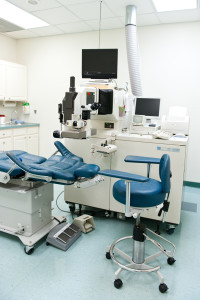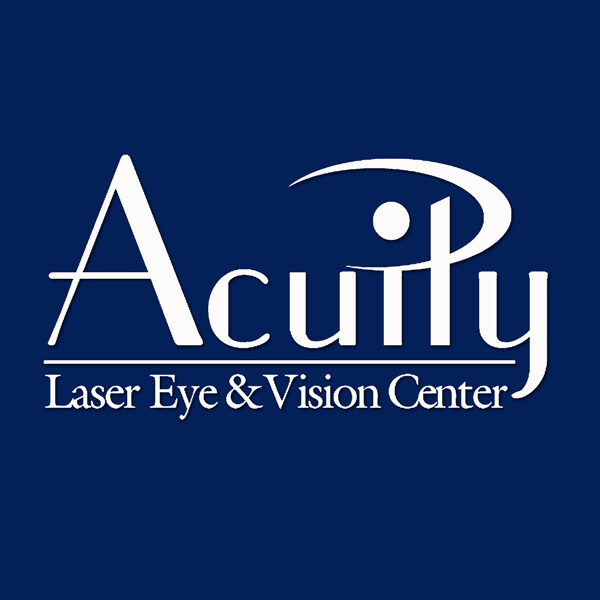By Steven Vale, MD
LASIK and other forms of laser refractive surgery, such as PRK and Epi-LASIK, all use advanced excimer lasers to reshape the cornea and correct refractive errors including myopia (nearsightedness), hyperopia (farsightedness) and astigmatism. Excimer lasers have revolutionized the field of corneal refractive surgery over the last two decades and have greatly increased the safety, efficacy and predictability of laser vision correction surgery.
Excimer lasers have the ability to remove, or “ablate,” microscopic amounts of tissue from the cornea’s underlying stromal layer with a very high degree of accuracy and without the possibility of damaging the surrounding corneal tissue.
Several FDA-approved excimer lasers are on the market presently, but one is not necessarily better than another. The most suitable excimer laser for you will depend on your specific requirements, such as your degree of refractive error, the size of your pupils and the thickness of your corneas. Your eye surgeon will advise you as to which excimer laser is best for you.
Most experts agree that your eye surgeon’s experience and abilities, as well as a thorough evaluation of whether you’re a suitable LASIK candidate, are far more critical factors affecting final LASIK outcomes than subtle differences between excimer lasers.
How Do Excimer Lasers Work?
The excimer laser emits a non-thermal beam of ultraviolet light of a specific ultraviolet (invisible) wavelength (typically 193 nanometers) to precisely remove corneal tissue. When the surface of the cornea is reshaped in the proper way, light rays can focus properly onto the retina for clear vision.
The high-energy pulses of ultraviolet light penetrate only a tiny amount of the cornea and have the ability to remove as little as 0.25 microns of tissue at a time. (One micron is a thousandth of a millimeter.)
An excimer laser corrects nearsightedness by flattening the cornea; it corrects farsightedness by making the cornea steeper. Astigmatism can also be corrected by reshaping the cornea into a spherical shape.
Excimer lasers are controlled by computer settings programmed to correct your specific refractive error. Your surgeon will program the excimer laser with the desired measurements in order to reshape your cornea and treat your prescription. The quantity and pattern of tissue removal are unique to each patient.
 Most modern excimer lasers have automated eye-tracking systems that monitor eye movements and keep the laser beam on target during surgery. Studies have shown that eye trackers produce better outcomes and decrease LASIK complications compared with past lasers that did not use eye-tracking systems.
Most modern excimer lasers have automated eye-tracking systems that monitor eye movements and keep the laser beam on target during surgery. Studies have shown that eye trackers produce better outcomes and decrease LASIK complications compared with past lasers that did not use eye-tracking systems.
Pupil Size, Ablation Speed and Patient Comfort
In recent years, increasing evidence has indicated that larger pupil sizes may affect laser vision correction outcomes. If your pupil expands in low light beyond the diameter of the laser treatment zone on the cornea, you may experience vision problems such as glare and halos at night.
Some surgeons believe the diameter of the laser ablation should be at least as large as your pupil in dim light. If you have larger pupils, the type of excimer laser may be important in relation to how large the treatment zone (diameter) the laser is capable of creating. You should discuss this with your surgeon.
Treatment times also differ among lasers, ranging from 30 to 60 seconds or longer. You may consider that important in terms of your comfort as you undergo a procedure.
You also might want to ask whether your surgeon uses a femtosecond laser or a surgical instrument (microkeratome) to create the corneal flap in LASIK eye surgery and how these two approaches might differ in terms of your comfort. Many surgeons take opposing sides in the microkeratome vs. femtosecond LASIK debate.
What To Consider When Comparing Different LASIK Lasers
When evaluating lasers for LASIK, PRK or other corneal refractive surgery, you may be drawn to information gathered during FDA clinical trials leading up to approval. But you should keep these points in mind:
FDA clinical trial results for LASIK lasers can’t be directly compared, since each study used different goals and patient selection criteria.
Today’s results are often better than FDA data. By definition, FDA trials occur during the early period of a laser’s life cycle. Manufacturers are allowed to and often do make technical improvements to the instruments, sometimes even while the lasers are still under investigation. One such improvement has been the introduction of wavefront LASIK technology, which delivers a more precise and customized refractive correction than earlier lasers.
period of a laser’s life cycle. Manufacturers are allowed to and often do make technical improvements to the instruments, sometimes even while the lasers are still under investigation. One such improvement has been the introduction of wavefront LASIK technology, which delivers a more precise and customized refractive correction than earlier lasers.
The surgeon’s technique evolves as well, and usually becomes more advanced than the technique used in the FDA trials. This, together with increasing surgeon experience over time, means that results in actual clinical practice often are better than the initial FDA data.
FDA data in one study cannot fairly be compared with FDA data in another study. Manufacturers go to the FDA with various study designs, which often have differing patient-enrollment criteria and endpoints. Although all studies must answer certain basic questions regarding safety and effectiveness, they are not designed to be compared with one another.
A true comparison of Laser A and Laser B would require randomized clinical trials, in which patients would be randomly assigned to receive surgery by one laser or the other over the same time period by the same surgeons. FDA trials don’t do that — although other, non-FDA studies sometimes do.
Studies don’t cover every possibility. Even if a certain characteristic or condition appears to exclude you from treatment because of how the approval for the excimer laser is worded, your eye surgeon still may consider you a candidate.
Also, another laser with specific approval for your characteristic or condition may not necessarily do a better job.
Remember that studies have differing designs, and people with your characteristic or condition
may have been excluded. Even if they were included in the study, results may have been inconclusive because of factors such as too few people or insufficient data for determining statistical or clinical significance.
Once the FDA approves a laser, your surgeon can use it any way he or she deems appropriate. This is true of all FDA-approved drugs and devices. This is commonly referred to as “off-label” use of an FDA-approved drug, device or laser. It’s called a physician’s practice-of-medicine prerogative, and there’s nothing inherently wrong with it. It’s 100 percent legal for physicians to use devices and medications in “off-label” mode.
While specific excimer laser technology plays a key role, ultimately it is your surgeon’s skill and experience — and your suitability as a candidate — that will be the most important factors affecting your LASIK outcome.


Comments are closed